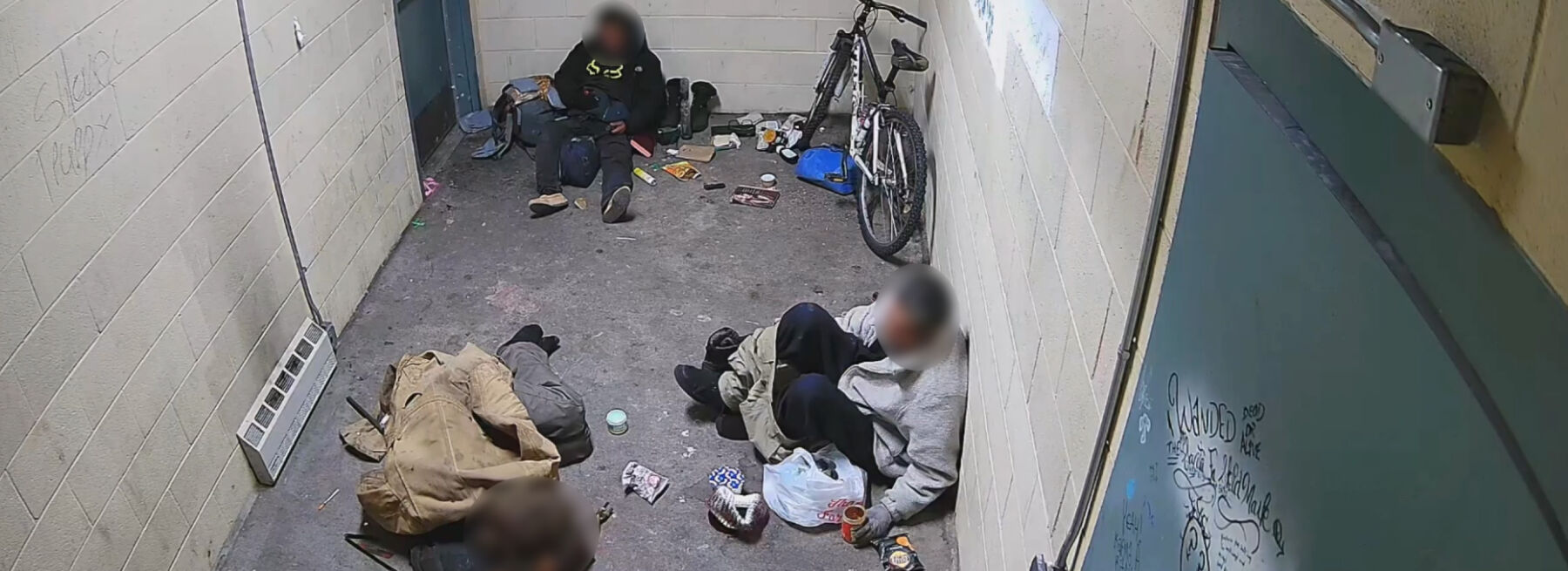One of Stealth’s greatest assets in helping to deter criminal or other unwanted activity in multifamily residential communities and other commercial properties is the ability to respond to these scenarios in real time.
At approximately 10:18 pm, Stealth security professionals monitoring a Colorado apartment building observed multiple individuals loitering in one of the building’s stairwell areas. Observing monitoring operators activated onsite audible alarms, warning the group that they were trespassing on the property and needed to clear the area. Two of the three individuals quickly heeded the warnings, leaving the area without further incident.
This incident clearly illustrates the differences between monitored and unmonitored surveillance. With unmonitored surveillance, property owners and managers are essentially hoping the presence of the cameras themselves will deter trespassers, loiterers, burglars, vandals, and other criminals from targeting their property- or relying on video footage after the fact to solve a problem or help determine what happened after damage, theft, or other issues are discovered.
Unchecked loitering and vagrancy in apartment communities can lead to a variety of issues, impacting both the safety and the quality of life for residents, as well as the property’s reputation and financial well-being.
One of the primary concerns with loitering and vagrancy is the sense of insecurity it can create among residents. The presence of unfamiliar individuals loitering around buildings or common areas can make residents feel unsafe, particularly if these individuals are perceived as unpredictable or potentially involved in criminal activities. This sense of insecurity can lead to decreased satisfaction among tenants and higher turnover rates, which in turn affects the property’s income stability.
From a property management perspective, unchecked loitering can also lead to physical degradation of the property. Loiterers may leave litter, cause vandalism, or damage property fixtures, leading to increased maintenance costs and a decline in the overall aesthetic appeal of the complex. This not only makes the property less attractive to potential renters but can also decrease the value of the property.
Another concern? Properties that are known to have issues with loitering and vagrancy may find it harder to attract new tenants. Prospective renters might be deterred by the visible presence of vagrants or by the property’s reputation for insecurity and disorder, impacting rental rates and occupancy levels.
Effective management of loitering and vagrancy involves a combination of physical security measures, social interventions, and legal strategies. Enhanced lighting, strategic use of landscaping to remove hidden nooks, and controlled access points can physically deter loiterers and unauthorized visitors. Social strategies might include engaging with local social services to provide support for homeless individuals found on the property, thereby addressing the root causes of vagrancy. Legally, property managers need to be aware of local laws regarding loitering and vagrancy to enforce no-trespassing rules effectively and humanely.
Property managers can also consider advanced security solutions such as live video monitoring, which not only helps in deterring loitering through active surveillance but can also provide evidence if legal actions become necessary. This approach not only increases the security of the property but also ensures that interventions are timely and based on real-time activities.
Overall, addressing loitering and vagrancy proactively and effectively requires a balanced approach that considers security, community relations, and legal aspects to ensure the safety and well-being of tenants and the integrity of the property.
Enhanced Security Strategies for Multifamily Residential Communities
At Stealth, we are well aware of the broad range of security challenges multifamily residential properties face, from mail and package theft to unauthorized access in storage areas and opportunistic crimes in parking facilities. These issues are prevalent throughout multifamily communities in both the U.S. and Canada, deeply affecting property owners, managers, and residents alike. It is for this reason that we have developed a cutting-edge, proactive security measure: live video monitoring. This approach has consistently proven effective in deterring criminal activities, reinforcing our commitment to the safety and well-being of communities, businesses, and properties across North America.
Property management professionals have learned through experience that traditional security measures, like passive surveillance cameras and physical barriers, often do not sufficiently deter criminal behavior. While these tools are valuable, they have inherent limitations, including the potential for criminals to bypass them easily. Additionally, surveillance footage typically only confirms criminal activity after the fact and does not allow for immediate intervention without real-time monitoring.
At the core of Stealth’s security solution are our skilled security operators who meticulously monitor critical areas of properties. Their proactive approach enables them not only to observe but also to actively engage with incidents as they unfold. This includes issuing audible warnings to deter potential intruders and, when necessary, swiftly contacting local law enforcement with live, actionable intelligence about ongoing criminal activities. This direct communication often results in faster and more focused responses from police.
For property managers of multifamily residential communities looking for a strong, proactive, and cost-effective security solution, Stealth’s live video monitoring offers a strategic advantage. Not only can it enhance security, but it also provides significant cost savings compared to traditional security guard services—up to 60%. We invite you to contact us to discuss your security needs with one of our multifamily residential security specialists and to receive a personalized quote.
Texas Private Security License Number: B14187
California Alarm Operator License Number: ACO7876
Florida Alarm System Contractor I License Number: EF20001598
Tennessee Alarm Contracting Company License Number: 2294
Virginia Private Security Services Business License Number: 11-19499
Alabama Electronic Security License # 002116
Canada TSBC License: LEL0200704

